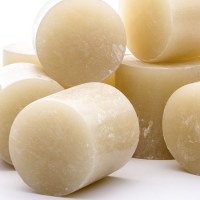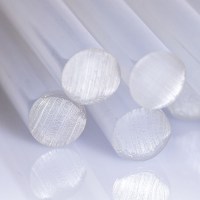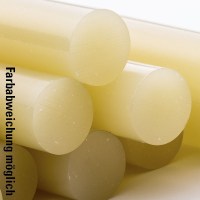Hot Melt Classification: Base polymer EVA
Ethylene vinyl acetate (EVA) is a commonly used base polymer for standard bonds. The hot-melt adhesives are used in floristry, handcraft, the construction industry and in various packaging applications.
In the basic form, the common EVA polymers are transparent and clear. They are then further formulated with additives such as resins, waxes, oils, etc. to form the final hot-melt adhesive. The viscosity/flowability, the open time and the setting time are determined via the clever formulation of the raw materials mentioned.
An advantage of EVA hot-melt adhesives: Ethylene vinyl acetate is classified as non-hazardous in the sense of Regulation (EG) No. 1272/2008 and is not subject to labelling according to EG guidelines.
The usual processing temperature for sticks is 190°C. For packaging applications that are covered with granules, the processing temperature is usually 160°C. At these temperatures, the EVA retains its properties in terms of cohesion and strength of the bond.
At higher temperatures (more than 200°C), it must be taken into account that the properties of the adhesive change.
Above all, the balanced adhesion / cohesion ratio and the good price / performance ratio make this type of adhesive so successful. For this reason, many hot-glue sticks that are available in DIY stores and for the hobby sector are EVA based.
Advantages of EVA adhesives
- Universally applicable
- Balanced adhesion / cohesion ratio
- Good price / performance ratio
- Harmless to health and no labelling required
- Good thermal stability up to 200°C
Delivery forms of EVA adhesives

Granulate

42 mm slugs

12 mm sticks

18 mm sticks
Colour variations of EVA adhesives
Adhesives are natural products and can vary in colour depending on the recipe.
